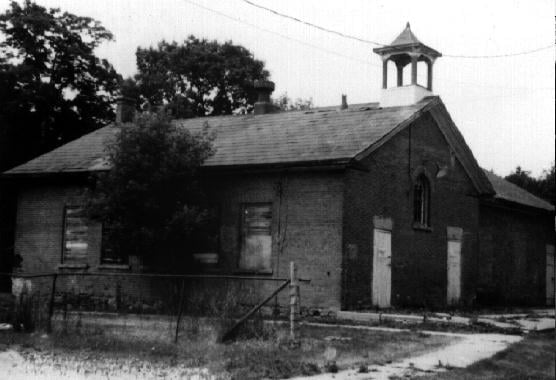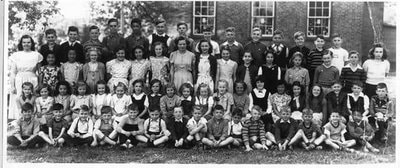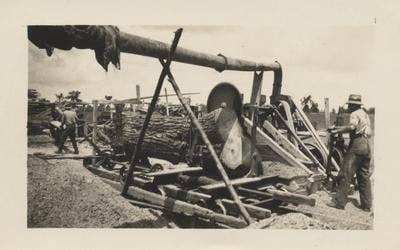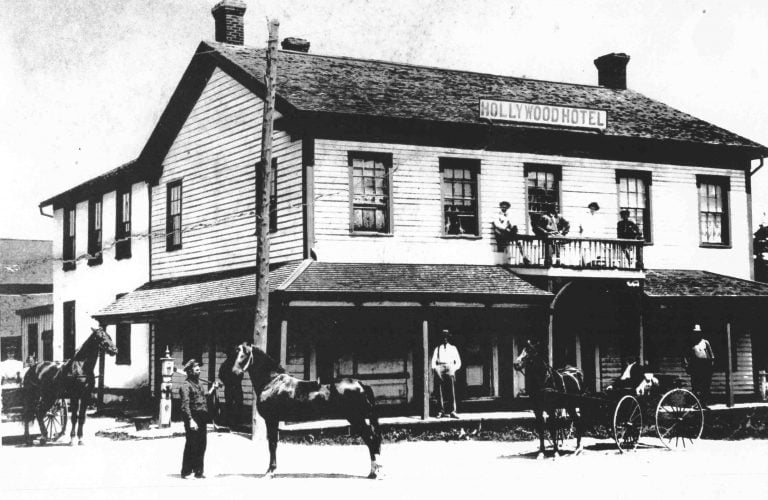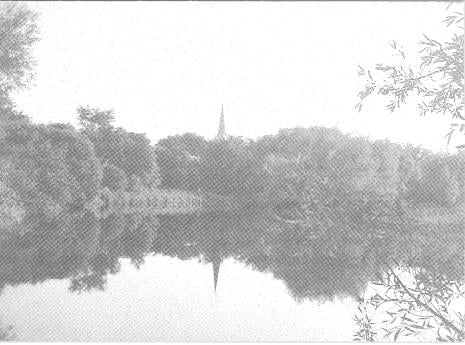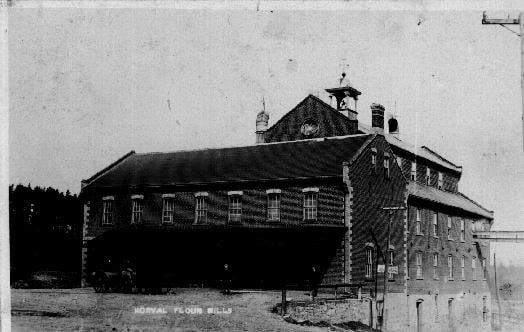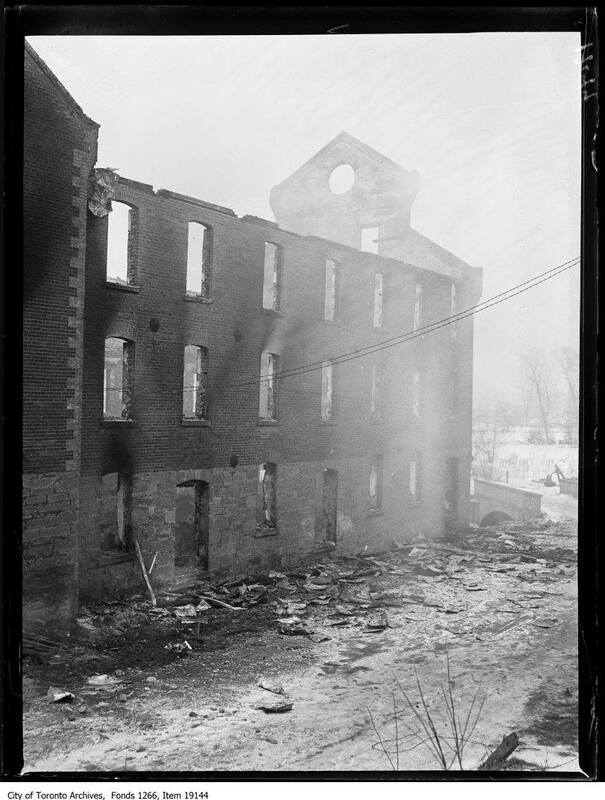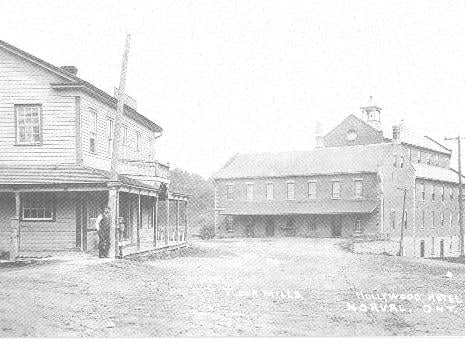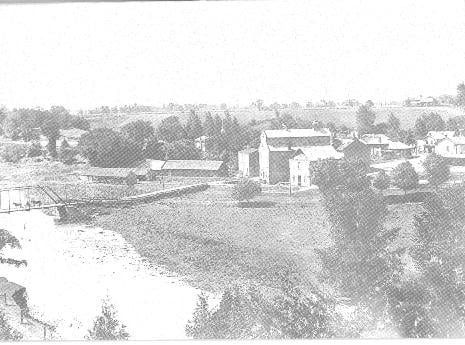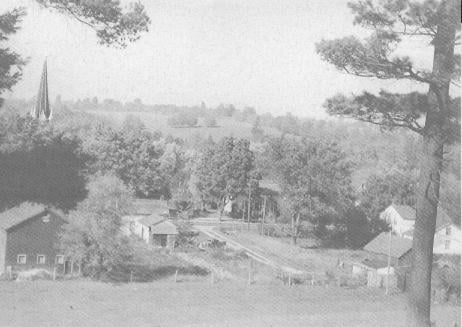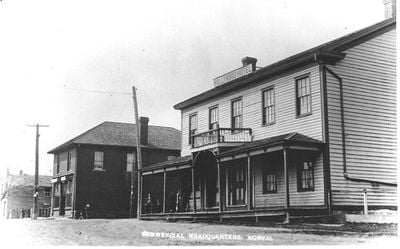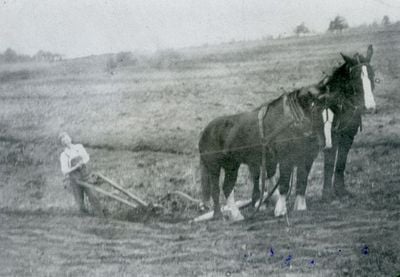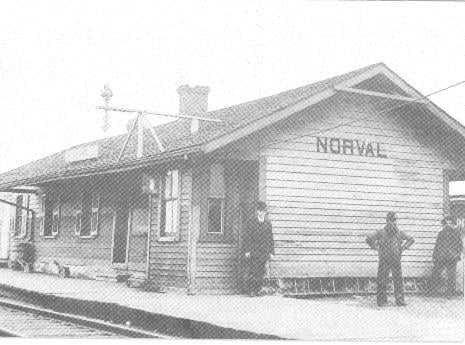Norval
Norval
In 1825 James McNab and his family arrived from Vermont to the banks of the Credit
; McNabb was a United Empire Loyalist and had fought in the War of 1812 as a Lieutenant.
The family raised sheep and built a grist and a sawmill on the Credit River. Some of their wood was shipped to England for use as masts on naval ships. Flour mills also opened in this area; the largest one operated until 1930 when it was destroyed in a fire.
In 1832 the village was named McNab’s Village, the inhabitants were chiefly English, Irish and Scottish. By 1837 there was 5 mills in operations in the village
In 1836 the post office was established. Previously, the settlement had been called McNabsville and McNab's Mill 1825 – 1835, Norville 1836 later Norval. Norval is believed to take its name from the Scottish play Douglas by poet John Home
In 1838, the mills were sold to Peter Adamson. In 1851, the Guelph Plank Road passed through this area and by 1856 the Grand Trunk Railway (GTR) had arrived. The latter was useful for shipping goods from this area.
In 1846, the settlement had a population of about 200 inhabitants, served by two churches, various tradesmen, a gristmill, an oatmeal mill, a distillery, two stores and a tavern.
Norval became a thriving village, complete with a Broom factory, ashery, bakery, woollen and flax mills, carriage works, a blacksmith and harness shops, brass foundry, General store, several hotels. One was the Hollywood Hotel built in 1840. It was a main stop on the stagecoach ride from Guelph to Toronto.
In the early 1900’s I found that there was a Cheese Factory (Norval Cheese Factory) Hard to find information on this business. It does have my interest.
Upper Canada College, Norval Outdoor School Acquired in 1913, it was established in the property after 1935.
Author Lucy Maud Montgomery, writer of the Anne of Green Gable books, lived in Norval from 1926 to 1935. In her journal, Montgomery expressed her appreciation for the village’s natural beauty, and declared, “I love Norval as I have never loved any place save Cavendish [Prince Edward Island]. It is as if I had known it all my life".
In 1954 the grist mill was destroyed by Hurricane Hazel. In 1972 the remaining structures were removed to expand Hwy. Many historic buildings still stand in Norval.
Please do look at the photos as there is a lot more information written down on each photo of Norval.
In 1825 James McNab and his family arrived from Vermont to the banks of the Credit
; McNabb was a United Empire Loyalist and had fought in the War of 1812 as a Lieutenant.
The family raised sheep and built a grist and a sawmill on the Credit River. Some of their wood was shipped to England for use as masts on naval ships. Flour mills also opened in this area; the largest one operated until 1930 when it was destroyed in a fire.
In 1832 the village was named McNab’s Village, the inhabitants were chiefly English, Irish and Scottish. By 1837 there was 5 mills in operations in the village
In 1836 the post office was established. Previously, the settlement had been called McNabsville and McNab's Mill 1825 – 1835, Norville 1836 later Norval. Norval is believed to take its name from the Scottish play Douglas by poet John Home
In 1838, the mills were sold to Peter Adamson. In 1851, the Guelph Plank Road passed through this area and by 1856 the Grand Trunk Railway (GTR) had arrived. The latter was useful for shipping goods from this area.
In 1846, the settlement had a population of about 200 inhabitants, served by two churches, various tradesmen, a gristmill, an oatmeal mill, a distillery, two stores and a tavern.
Norval became a thriving village, complete with a Broom factory, ashery, bakery, woollen and flax mills, carriage works, a blacksmith and harness shops, brass foundry, General store, several hotels. One was the Hollywood Hotel built in 1840. It was a main stop on the stagecoach ride from Guelph to Toronto.
In the early 1900’s I found that there was a Cheese Factory (Norval Cheese Factory) Hard to find information on this business. It does have my interest.
Upper Canada College, Norval Outdoor School Acquired in 1913, it was established in the property after 1935.
Author Lucy Maud Montgomery, writer of the Anne of Green Gable books, lived in Norval from 1926 to 1935. In her journal, Montgomery expressed her appreciation for the village’s natural beauty, and declared, “I love Norval as I have never loved any place save Cavendish [Prince Edward Island]. It is as if I had known it all my life".
In 1954 the grist mill was destroyed by Hurricane Hazel. In 1972 the remaining structures were removed to expand Hwy. Many historic buildings still stand in Norval.
Please do look at the photos as there is a lot more information written down on each photo of Norval.
